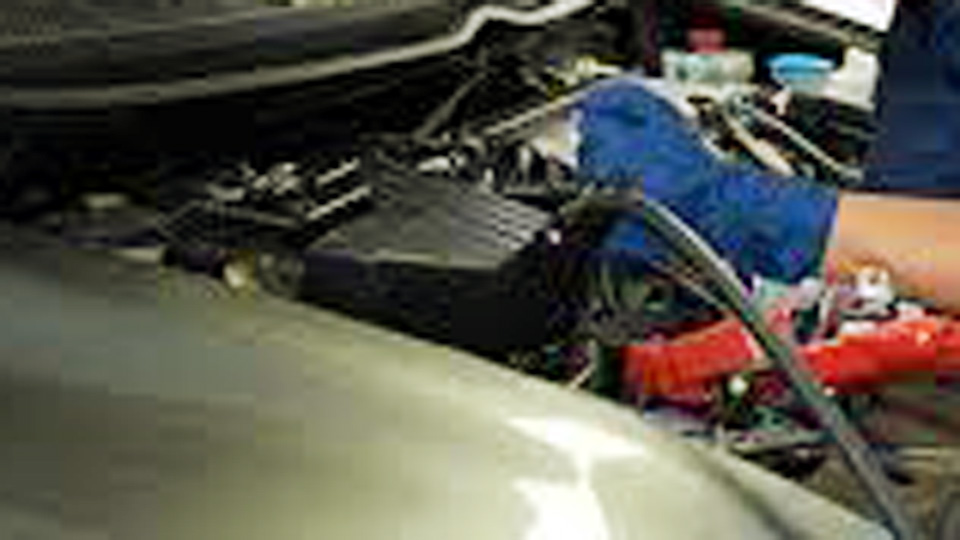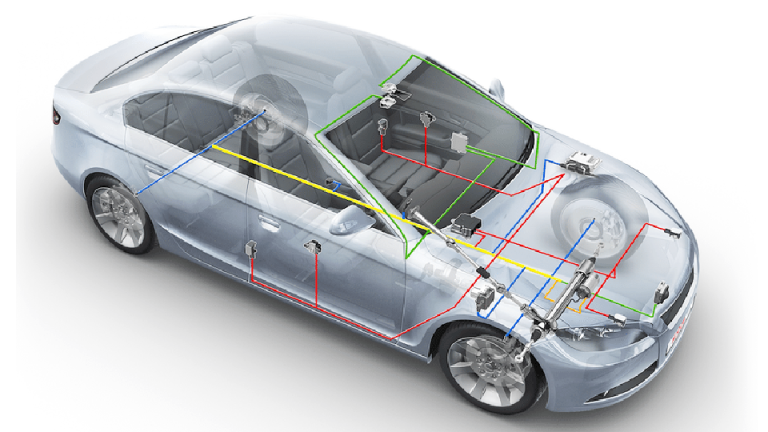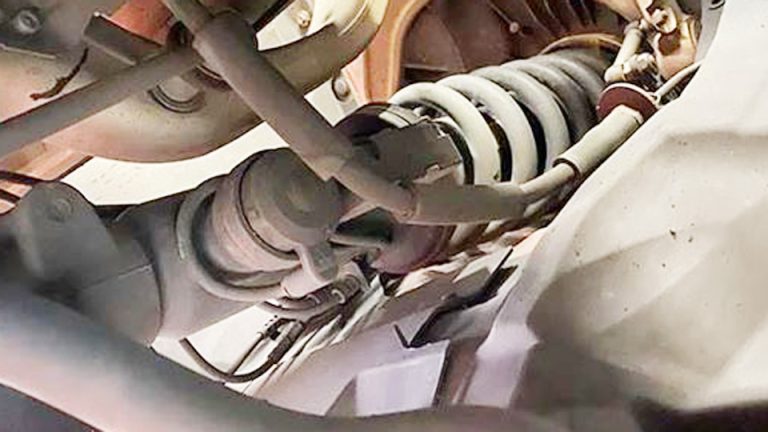I’ve been turning wrenches for over a decade, and let me tell you, being a successful automotive technician isn’t just about knowing how to swap out a spark plug or diagnose a check engine light. It’s about combining hands-on skills, a deep understanding of car systems, and a knack for problem-solving under pressure.
Whether you’re a DIY mechanic tinkering in your garage, an auto student learning the ropes, or a pro in a busy shop, mastering the art of automotive repair—especially when it comes to spare parts—can set you apart. In this guide, I’m sharing practical advice, real-world insights, and hard-earned lessons from the garage to help you thrive as an automotive technician.
This article dives deep into one critical aspect of the job: understanding and working with spare parts. From choosing the right components to installing them correctly, I’ll walk you through how to handle key vehicle parts like alternators, brake pads, and timing belts. I’ll share tips on spotting genuine parts, avoiding common mistakes, and making smart decisions that save time, money, and headaches.

Image by ranken
Why Spare Parts Knowledge Is the Backbone of a Great Technician
Being a successful automotive technician starts with understanding spare parts. Every car is a puzzle, and each component—whether it’s a fuel pump, oxygen sensor, or suspension strut—plays a specific role in keeping the vehicle safe, reliable, and efficient. Knowing how these parts work, when they fail, and how to replace them properly is what separates a good tech from a great one.
What Are Spare Parts and Why Do They Matter?
Spare parts are the replaceable components that keep a vehicle running smoothly. Think of them as the building blocks of a car: from the alternator that charges the battery to the brake pads that ensure safe stopping. These parts directly impact safety, performance, and fuel efficiency.
A failing alternator, for example, can leave you stranded with a dead battery, while worn brake pads compromise stopping power. As a technician, your job is to identify failing parts, choose quality replacements, and install them correctly to keep the car—and its driver—safe.
Common Problems and Signs of Failure
Parts wear out; it’s just a fact of life in the automotive world. Take alternators, for instance. I once had a customer roll into the shop with a 2008 Honda Accord that wouldn’t start. The dashboard was dim, and the battery was barely holding a charge. A quick voltage test showed the alternator was only putting out 11 volts—way below the 13.5–14.5 volts it should.
Common signs of alternator failure include dim headlights, a whining noise, or a battery warning light. Similarly, brake pads often squeal or grind when worn, and a failing timing belt might cause misfires or a rattling noise under the hood.
When and Why Replacement Is Needed
Replacing parts isn’t always about waiting for failure. Preventive maintenance can save customers thousands. For example, timing belts on vehicles like a 2010 Toyota Camry should be replaced every 90,000–100,000 miles to avoid catastrophic engine damage. Brake pads typically need replacement every 30,000–70,000 miles, depending on driving habits.
As a tech, you need to know these intervals and educate customers. A good rule of thumb: if a part shows wear (like cracked belts or glazed brake pads) or diagnostic codes point to failure (like P0135 for an oxygen sensor), it’s time to swap it out.
OEM vs Aftermarket: Making the Right Choice
One of the biggest decisions you’ll face is choosing between Original Equipment Manufacturer (OEM) parts and aftermarket alternatives. OEM parts, made by the vehicle’s manufacturer (like Ford or Honda), guarantee a perfect fit and reliability but often come with a higher price tag. Aftermarket parts, from brands like Bosch or Denso, can be cheaper and sometimes offer better performance, but quality varies.
Here’s a quick comparison table for alternators, a part I’ve replaced countless times:
| Feature | OEM Alternator | Aftermarket Alternator |
|---|---|---|
| Fitment | Exact match for vehicle specs | May require minor adjustments |
| Price | $200–$500 (e.g., Honda OEM) | $100–$300 (e.g., Bosch, Denso) |
| Warranty | Often 2–3 years | Varies (6 months–2 years) |
| Reliability | High, designed for specific vehicle | Varies by brand; some match OEM |
| Availability | Dealer or specialty retailers | Widely available (AutoZone, Amazon) |
Pro Tip: For critical systems like brakes or timing belts, I lean toward OEM for peace of mind. For less critical parts like cabin air filters, a reputable aftermarket brand like Fram or Mann works fine and saves money.
Installation Tips and Common Mistakes
Installing spare parts sounds straightforward, but it’s easy to mess up if you’re not careful. When replacing an alternator, for example, always disconnect the battery first to avoid electrical shorts. Use a torque wrench to tighten bolts to the manufacturer’s specs—overtightening can crack the housing. I once saw a rookie tech skip the belt tension check after installing a new alternator, and the belt slipped off within a week, leaving the customer stranded.
For brake pads, always bed them in properly after installation. Drive gently and perform controlled stops to create an even friction layer. Skipping this step can lead to uneven wear or reduced stopping power. Another common mistake? Not checking related components. When replacing brake pads, inspect rotors for scoring and calipers for leaks. Ignoring these can lead to premature part failure.
Personal Anecdote: The Alternator That Taught Me Patience
Early in my career, I was working on a 2005 Ford F-150 with a charging issue. I swapped the alternator in a rush, assuming it was the culprit. The customer came back two days later—same problem. Turns out, I hadn’t checked the wiring harness for corrosion. After cleaning the connectors and testing the system properly, the truck ran like a champ. Lesson learned: always diagnose thoroughly before throwing parts at a problem.
Mastering Brake Pad Replacement: A Core Skill for Technicians
Brake pads are one of the most common parts you’ll replace as a technician. They’re critical for safety, and customers notice the difference between a smooth stop and a shaky one. Let’s break down everything you need to know.
What Are Brake Pads and What Do They Do?
Brake pads are flat, friction-material-covered components that press against the brake rotor to slow or stop a vehicle. They’re part of the disc brake system, found on most modern cars like the 2020 Chevy Silverado or Honda Civic.
Pads are made of materials like ceramic, semi-metallic, or organic compounds, each with different performance characteristics. Ceramic pads, for example, are quieter and produce less dust, while semi-metallic pads are durable but noisier.
Common Problems and Signs of Failure
Worn brake pads are hard to miss. You’ll hear squealing or grinding noises, feel a spongy pedal, or notice longer stopping distances. I once had a customer with a 2015 Nissan Altima who ignored a squealing noise for weeks.
By the time they came in, the pads were metal-on-metal, scoring the rotors and doubling the repair cost. Visual inspection is key: most pads have wear indicators, and if they’re less than 1/4 inch thick, it’s time to replace them.
When and Why Replacement Is Needed
Brake pads typically last 30,000–70,000 miles, but aggressive driving or heavy loads (like towing with a Ford F-250) can shorten their life. Replace them when they’re worn to 3mm or less, or if you notice uneven wear, which could point to a stuck caliper. Regular inspections during oil changes can catch issues early, saving customers from costly rotor or caliper repairs.
OEM vs Aftermarket Brake Pads
OEM brake pads from brands like GM or Toyota are designed for specific vehicles, ensuring consistent performance. Aftermarket pads from companies like Akebono or Wagner can be just as good, often at half the price. Here’s a quick comparison for a 2018 Honda CR-V:
| Feature | OEM Brake Pads | Aftermarket Brake Pads |
|---|---|---|
| Fitment | Perfect fit, no modifications | Usually fits well, check compatibility |
| Price (Front Set) | $80–$150 | $40–$100 (e.g., Akebono, Wagner) |
| Material Options | Usually semi-metallic or ceramic | Wide range (ceramic, organic, etc.) |
| Durability | High, consistent with factory specs | Varies; premium brands match OEM |
| Noise/Dust | Moderate dust, low noise | Varies; ceramic often quieter |
For performance vehicles like a Mustang GT, go with aftermarket performance pads like Hawk or EBC for better bite, but warn customers about increased dust.
Installation Tips and Common Mistakes
Replacing brake pads is straightforward but requires attention to detail. Here’s a step-by-step guide:
- Prep: Jack up the car, secure it with jack stands, and remove the wheel.
- Remove Old Pads: Unbolt the caliper, slide it off, and remove the worn pads. Use a C-clamp to compress the caliper piston.
- Inspect Components: Check rotors for grooves or warping and caliper pins for wear. Lubricate pins with high-temp brake grease.
- Install New Pads: Place new pads in the caliper bracket, ensuring clips or shims are in place.
- Reassemble: Bolt the caliper back, torque to spec (check your vehicle’s manual), and reinstall the wheel.
- Bed the Pads: Perform 10–15 gentle stops from 30 mph to heat and transfer friction material.
Common mistakes? Forgetting to lubricate caliper pins, which causes uneven wear, or not bleeding the brakes if you accidentally open the hydraulic system. Always double-check torque specs—loose caliper bolts are a safety disaster.
Anecdote: The Brake Job That Went Sideways
I’ll never forget a 2016 Jeep Wrangler I worked on. The customer wanted a cheap brake job, so they brought aftermarket pads from an online retailer. Halfway through the install, I noticed the pads didn’t fit the bracket properly—wrong model. We had to order OEM pads, delaying the job and frustrating the customer. Always verify part compatibility before starting work.
Timing Belts: The Heartbeat of Engine Reliability
Timing belts are less common now with the rise of timing chains, but they’re still critical on vehicles like older Hondas, Toyotas, and some VWs. A failed timing belt can destroy an engine, so mastering their replacement is a must.
What Is a Timing Belt and What Does It Do?
A timing belt synchronizes the crankshaft and camshaft, ensuring the engine’s valves open and close at the right time. It’s a toothed rubber belt, often paired with tensioners and pulleys, found in interference engines (where valve-piston collisions can occur if it breaks). For example, a 2006 Honda Civic’s 1.8L engine relies on a timing belt for precise operation.
Common Problems and Signs of Failure
Timing belts wear out over time, typically every 60,000–100,000 miles. Look for cracks, missing teeth, or a glazed appearance. Symptoms of failure include engine misfires, ticking noises, or complete engine failure if the belt snaps. I once diagnosed a 2003 Acura TL that wouldn’t start—sure enough, the timing belt had jumped a tooth, throwing off the engine’s timing.
When and Why Replacement Is Needed
Follow the manufacturer’s replacement interval (e.g., 90,000 miles for a 2010 Toyota Corolla). Don’t wait for failure, especially in interference engines, where a broken belt can bend valves and cost thousands to fix. Always replace the water pump, tensioners, and pulleys at the same time to avoid repeat labor costs.
OEM vs Aftermarket Timing Belts
OEM timing belts from Honda or Toyota are pricier but guaranteed to fit and last. Aftermarket kits from Gates or Dayco are more affordable and often include tensioners and water pumps. Here’s a comparison for a 2008 Honda Accord:
| Feature | OEM Timing Belt Kit | Aftermarket Timing Belt Kit |
|---|---|---|
| Fitment | Exact match for vehicle | High-quality brands fit well |
| Price | $250–$400 (Honda OEM) | $100–$250 (Gates, Dayco) |
| Components | Belt, tensioner, water pump | Often includes seals, pulleys |
| Warranty | 2–3 years | 1–2 years, varies by brand |
| Reliability | Factory-spec, highly reliable | Good with trusted brands |
Pro Tip: Stick with OEM for timing belts on high-mileage vehicles or interference engines. The peace of mind is worth the cost.
Installation Tips and Common Mistakes
Replacing a timing belt is labor-intensive but rewarding. Here’s a simplified guide:
- Prep: Disconnect the battery and remove accessories blocking the belt (e.g., power steering pump).
- Align Timing Marks: Rotate the crankshaft to top dead center (TDC) and align camshaft marks per the manual.
- Remove Old Belt: Release tensioner, remove the belt, and inspect pulleys and water pump.
- Install New Belt: Route the new belt, ensuring proper tension and alignment. Double-check marks.
- Reassemble: Torque all bolts to spec and test-run the engine.
Common mistakes include misaligning timing marks (hello, engine damage) or reusing old tensioners, which can fail prematurely. Use a quality torque wrench and follow the manual religiously.
Anecdote: The Timing Belt Save
A customer with a 2004 VW Jetta ignored their mechanic’s advice to replace the timing belt at 100,000 miles. At 110,000, they brought it in with a slight ticking noise. I caught it just in time—cracks were forming on the belt. We replaced it, saving them from a $3,000 engine rebuild. Always stress the importance of preventive maintenance to customers.
Spotting Genuine vs. Fake Spare Parts
Counterfeit parts are a growing problem in the US market. Fake brake pads, alternators, or filters can fail prematurely or even cause accidents. Here’s how to spot the real deal:
Packaging and Branding: Genuine parts from brands like Bosch or ACDelco have high-quality packaging with clear logos, part numbers, and holograms. Fakes often have blurry printing or misspellings.
Price Too Good to Be True: A $50 “OEM” alternator for a 2020 Ford Explorer? Red flag. Compare prices on trusted sites like RockAuto or Advance Auto Parts.
Serial Numbers and QR Codes: Many OEM and premium aftermarket parts include traceable serial numbers or QR codes. Scan them to verify authenticity.
Buy from Reputable Sources: Stick to dealers, AutoZone, or NAPA. Avoid sketchy online marketplaces with no return policy.
Pro Tip: When in doubt, call the manufacturer’s customer service to verify a part’s authenticity using its serial number.
Tools, Safety, and Maintenance Best Practices
A successful technician needs the right tools and a safety-first mindset. Here’s what I keep in my toolbox for spare part jobs:
Essential Tools: Torque wrench (for precise tightening), socket set (3/8” and 1/2” drive), breaker bar, C-clamp (for brakes), and a multimeter (for electrical diagnostics).
Safety Gear: Gloves, safety glasses, and steel-toe boots. Never skip jack stands when working under a car.
Maintenance Tips: After installing parts, check fluid levels (e.g., brake fluid after a pad swap) and test-drive the vehicle. Document torque specs and part numbers for future reference.
Becoming a Master of Spare Parts
Being a successful automotive technician is about more than turning a wrench—it’s about mastering the art and science of spare parts. From alternators to brake pads to timing belts, understanding how these components work, when to replace them, and how to choose quality parts is what builds trust with customers and keeps vehicles on the road. Always prioritize safety, double-check your work, and invest in quality tools and parts.
FAQ: Common Spare Parts Questions
How Do I Know If My Brake Pads Need Replacing?
Listen for squealing or grinding noises, check for a spongy pedal, or inspect pads for less than 3mm thickness. Regular checks during oil changes can catch issues early.
Are Aftermarket Parts as Good as OEM?
High-quality aftermarket parts from brands like Bosch or Gates can match or exceed OEM performance, often at a lower cost. For critical systems like brakes, OEM is safer if you’re unsure about the brand.
How Often Should I Replace My Timing Belt?
Check your vehicle’s manual, but most timing belts need replacement every 60,000–100,000 miles. Always replace tensioners and water pumps at the same time.
How Can I Spot a Fake Spare Part?
Look for poor packaging, suspiciously low prices, or missing serial numbers. Buy from reputable retailers like NAPA or AutoZone, and verify part numbers with the manufacturer.
What’s the Most Important Tool for a Technician?
A torque wrench. Proper torque ensures parts are secure without damage.


